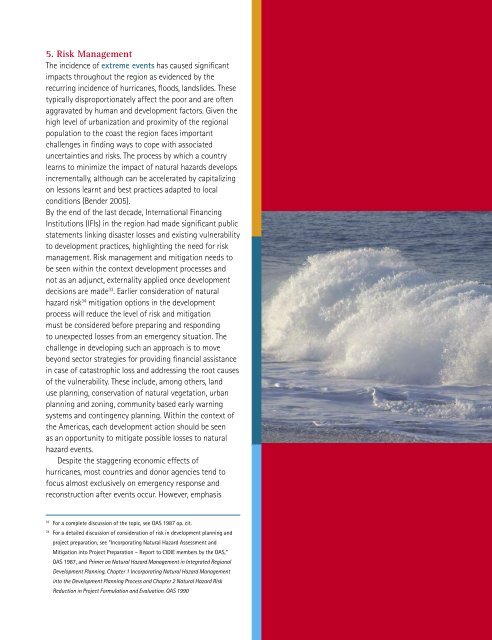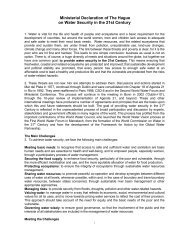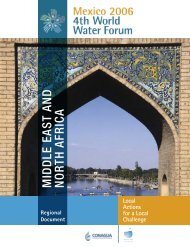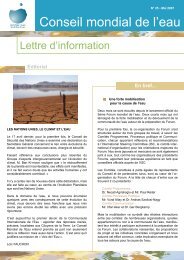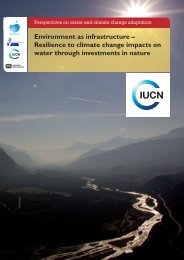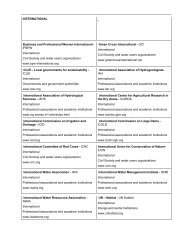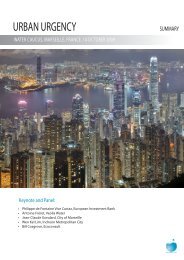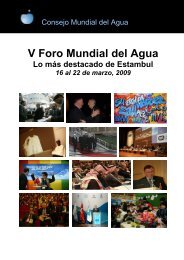Americas ok.indd - World Water Council
Americas ok.indd - World Water Council
Americas ok.indd - World Water Council
You also want an ePaper? Increase the reach of your titles
YUMPU automatically turns print PDFs into web optimized ePapers that Google loves.
5. Risk ManagementThe incidence of extreme events has caused significantimpacts throughout the region as evidenced by therecurring incidence of hurricanes, floods, landslides. Thesetypically disproportionately affect the poor and are oftenaggravated by human and development factors. Given thehigh level of urbanization and proximity of the regionalpopulation to the coast the region faces importantchallenges in finding ways to cope with associateduncertainties and risks. The process by which a countrylearns to minimize the impact of natural hazards developsincrementally, although can be accelerated by capitalizingon lessons learnt and best practices adapted to localconditions (Bender 2005).By the end of the last decade, International FinancingInstitutions (IFIs) in the region had made significant publicstatements linking disaster losses and existing vulnerabilityto development practices, highlighting the need for riskmanagement. Risk management and mitigation needs tobe seen within the context development processes andnot as an adjunct, externality applied once developmentdecisions are made 33 . Earlier consideration of naturalhazard risk 34 mitigation options in the developmentprocess will reduce the level of risk and mitigationmust be considered before preparing and respondingto unexpected losses from an emergency situation. Thechallenge in developing such an approach is to movebeyond sector strategies for providing financial assistancein case of catastrophic loss and addressing the root causesof the vulnerability. These include, among others, landuse planning, conservation of natural vegetation, urbanplanning and zoning, community based early warningsystems and contingency planning. Within the context ofthe <strong>Americas</strong>, each development action should be seenas an opportunity to mitigate possible losses to naturalhazard events.Despite the staggering economic effects ofhurricanes, most countries and donor agencies tend tofocus almost exclusively on emergency response andreconstruction after events occur. However, emphasis434th <strong>World</strong> <strong>Water</strong> Forum33For a complete discussion of the topic, see OAS 1987 op. cit.34For a detailed discussion of consideration of risk in development planning andproject preparation, see “Incorporating Natural Hazard Assessment andMitigation into Project Preparation – Report to CIDIE members by the OAS,”OAS 1987, and Primer on Natural Hazard Management in Integrated RegionalDevelopment Planning, Chapter 1 Incorporating Natural Hazard Managementinto the Development Planning Process and Chapter 2 Natural Hazard RiskReduction in Project Formulation and Evaluation. OAS 1990


